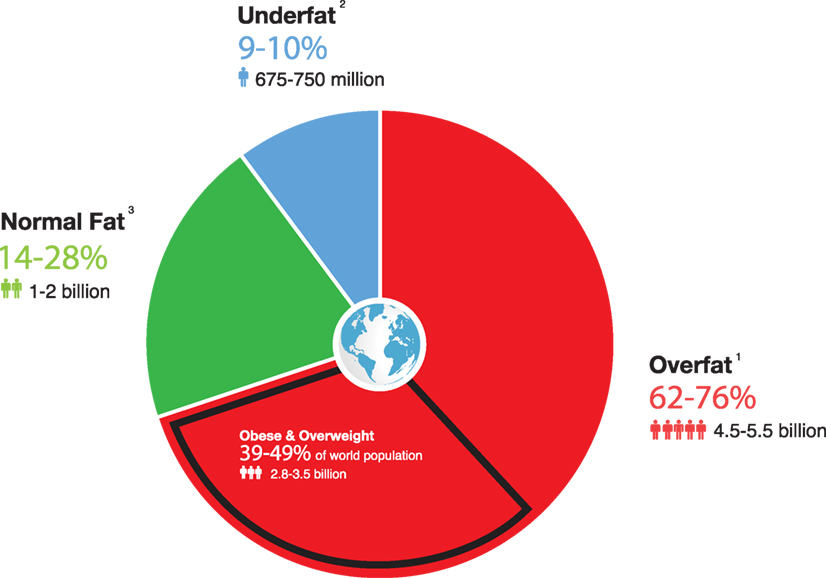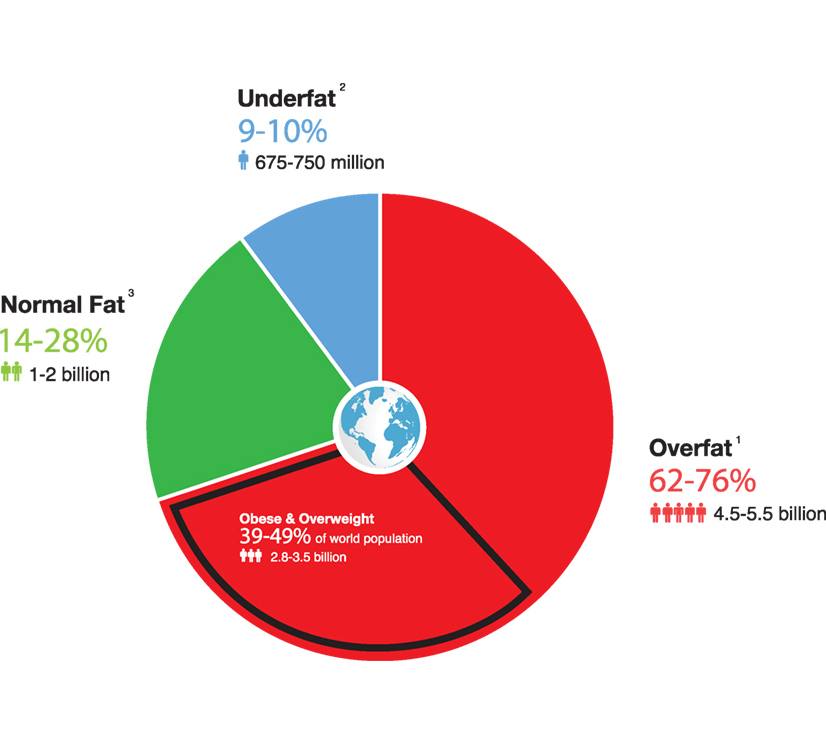As many athletes are making racing and training plans for 2017, a new study suggesting that 76 percent of the world’s population is overfat has not spared even those who are very active.
Researchers writing in the journal Frontiers of Public Health describe the overfat condition as a new pandemic that has quietly overtaken the world, and may affect an astonishing 5.5 billion people, many of them athletes.
“The overfat pandemic has not spared those who exercise or even compete in sports,” says lead author of the study Dr. Philip Maffetone, who collaborated with research assistant Ivan Rivera, and Professor Paul B. Laursen, adjunct at the Auckland University of Technology in New Zealand.

The new study, published Jan 3rd, describes the condition of overfat as having sufficient excess body fat to impair health. In addition to most of those who are overweight and obese, others falling into the overfat category include normal-weight people with increased abdominal fat, and those with a condition called “normal-weight metabolic obesity” — with those who exercise regularly falling into one or more of these categories.
While the obesity epidemic has grown considerably over the last three to four decades, this study casts light on the much higher numbers of people who may have unhealthy levels of body fat.
The overfat pandemic poses a global concern because of its strong association with rising chronic disease and healthcare costs, affecting people of all ages and incomes.
Also applicable to athletes, the study estimated 9 to 10 percent of the world population may be underfat. While we think of the condition of underfat as being due to starvation, the number of people starving worldwide is actually rapidly dropping. However, an aging population, an increase in chronic disease, and a rising number of excessive exercisers — those with anorexia athletica — are adding to the number of non-starving underfat individuals. Having too little body fat can also impair health.
This leaves as little as 14 percent of the world’s general population with normal body-fat percentages. While the number of people who exercise is growing worldwide, ranging from those who do minimal training to triathletes, marathoners and others who compete seriously, clearly more are falling into the overfat and underfat categories as well.
The study also brings to light that new terminology — specifically the term “overfat” — is important to replace the old notions of “overweight” and “obese.” While it’s estimated that up to 49 percent of the world’s population, or 3.5 billion people, are obese or overweight, the well-documented obesity epidemic may be merely the tip of the overfat iceberg, the authors state.
Better, more descriptive terminology tends to have downstream positive effects in helping those in healthcare and the public address the problem of excess body fat. Therefore, the term overfat, as opposed to obesity and overweight, may be more helpful moving forward in addressing this global pandemic.
Other major points of the study include:
- The traditional body-mass index (BMI) measures weight and height, but is not a direct measure of body fat.
- Waist circumference may be a more practical solution than the bathroom scale for identification of the overfat state.
- This is the first study to globally quantify those who are overfat versus overweight/obese.
To read a copy of the journal article, click here.
[jbox color=”yellow” icon=”http://naturalrunningcenter.com/wp-content/uploads/2016/01/phil-maffetone-60×60.png” title=”Dr. Phil Maffetone”]
Phil Maffetone is an internationally-acclaimed author, having published more than 20 books including the first on heart-rate monitoring (early 1980s) and the first on the benefits of barefoot running (1990s). Dr. Maffetone’s textbook, Complementary Sports Medicine (Human Kinetics 1999), is published in English, Italian, Japanese, and Korean. Dr. Maffetone continues to write extensively and lecture worldwide on health and human performance.
[/jbox]

